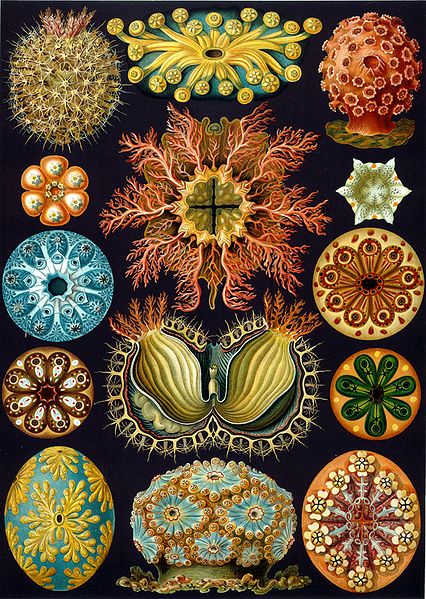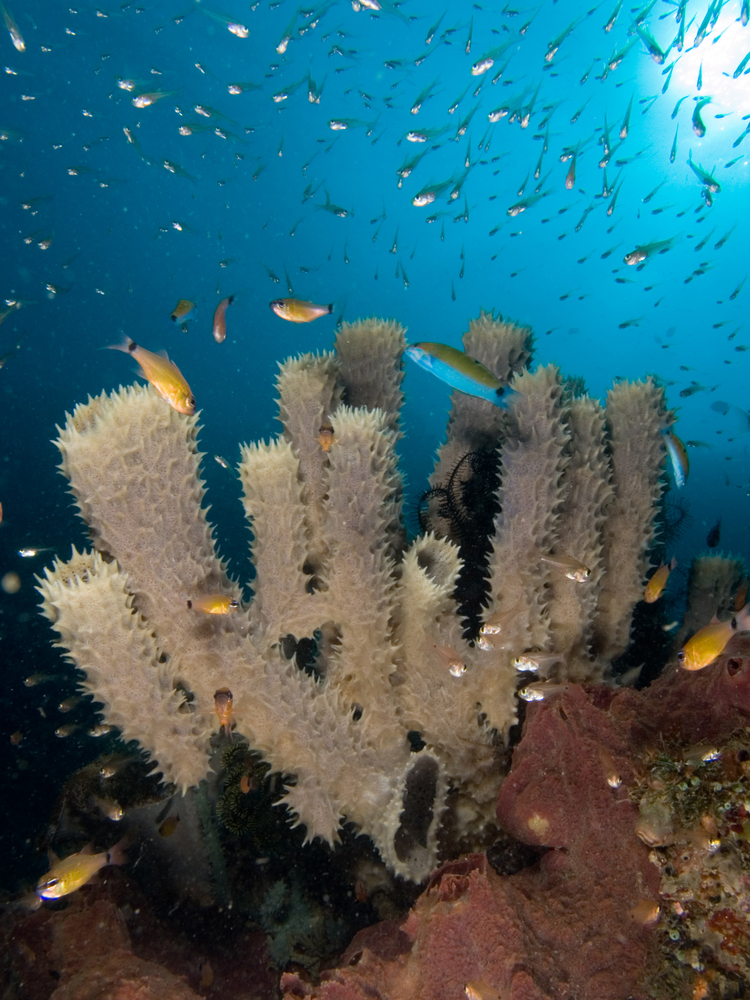From Sea Bed to Bed Side - Searching for Medicines in the Oceans
Interview with
We're often looking to nature for inspiration and novel ways to treat disease. But to take chemicals from the sea bed to the bed side, Marcel Jaspers is looking deep into the ocean...
Marcel - My name is Marcel Jaspers. I'm Professor of Chemistry at Aberdeen University. I run a lab called "The Marine Biodiscovery Centre." The main work that we focus on is the discovery of new molecules that might have pharmaceutical applications from marine organisms such as sponges, soft coral, sea squirts, and also now bacteria and fungi.
Chris - Why those species?
 Marcel - Initially, the invertebrates; the sponges, soft corals, and sea squirts are interesting because they have obvious other means of defence. So we're looking at them because they have a chemical defence system which acts as an alternative immune system perhaps, and these compounds tend to be very, very active. Not only are they active in many assays, many biological tests, they are also are much different from the chemical compounds that we found from terrestrial species.
Marcel - Initially, the invertebrates; the sponges, soft corals, and sea squirts are interesting because they have obvious other means of defence. So we're looking at them because they have a chemical defence system which acts as an alternative immune system perhaps, and these compounds tend to be very, very active. Not only are they active in many assays, many biological tests, they are also are much different from the chemical compounds that we found from terrestrial species.
Chris - And how do they affect an organism, the prey species or the thing that might be attacking them they're trying fend off? How do they work physiologically?
Marcel - So, there are some very sophisticated ones in terms of mechanism. So, a classic one is where it might have something to do with the inhibition of actin polymerisation so it basically stops the cell being able to divide. That's a classic mechanism that's employed. In order for compounds not to be toxic to the organism itself, they've got modified actin; in say, sponges, you might find that. And also, in other organisms what you have is that only the compound has a protective cap on it so that when the cell is broken open, enzymes are released and the compound is broken into two into the active part and the inactive part. So this is a very elegant way of making sure it doesn't kill itself.
Chris - And so, we're trying to delve into nature's medicine chest by looking at how these species do it and asking, "Can we copy this?"
Marcel - Exactly. So first of all, we try and get the compound as an idea of what nature makes and what it's good for, and at this stage, we're trying to work on copying or taking the genes from those organisms and putting them into a more easy to grow organism. We've been successful once so far and we're trying to make this up to a level where it's actually viable to use. At the beginning the yields are so low that you get 1 milligram for every 10 litres of culture. What you really need is something that gives grams per litre. So it's a big step to go from the small scale to the big scale.
Chris - You mentioned you're looking at micro-organisms as well. These are what, seabed microbes?
Marcel - Mostly seabed microbes, but also those that grow inside the sponges and soft corals. First of all, we started with that because the sponge itself is like a giant microbial factory. Maybe up to 40% of the sponge is bacterial biomass or fungal biomass, and it's almost like the sponge farms the bacteria for a certain reason, to protect itself probably. Some might be farmed for food. In cases of sea squirts eating their own bacteria, that's a known phenomenon, but in terms of the sponges, they produce so much interesting chemistry, and there are certain bacteria that are always associated with sponges. Even 1 or 2 miles apart, you might find 2 sponges with roughly the same bacteria, producing different chemistry, and we still don't know why that is.
Chris - So how do you go from "I've got a sponge here, there are some bacteria inside it with presumably some interesting chemistry going on." ...to... "here's a compound that could have promise in medicine?"
Marcel - So first of all, you need to know what your best bets are. In natural products, the things that we look at mainly are cancer, inflammation, infectious diseases, and parasitic diseases. That's where they've been proven to work the best. Most of the drugs that are coming forwards through the pipeline are for cancer. There are painkillers on the market from sea snails that have been developed. So, we're really thinking about how to get from seabed to bedside - as people sometimes say. And the answer is that there is a lot of effort needed to go from the small scale, the 'milligram' quantities we can isolate, to the kilogram scales that are needed for clinical trials.
 Chris - But looking at some of these molecules, they are horrendously complicated and if you ask a chemist to make them, it will take 30 steps. There's a loss with every step, so they end up with tiny amounts. Is the answer then to say, "rather than trying to make this in a test tube, we just get the organism to make it for us?"
Chris - But looking at some of these molecules, they are horrendously complicated and if you ask a chemist to make them, it will take 30 steps. There's a loss with every step, so they end up with tiny amounts. Is the answer then to say, "rather than trying to make this in a test tube, we just get the organism to make it for us?"
Marcel - Yes, so that's the reason for looking at bacteria. You can just culture them and you can really grow the bacteria up to a level where you can produce tens of milligrams per litre which is viable. The two drugs that are produced right now for cancer, that are sponge-derived, one is a sea squirt-derived one called ecteinascidin 743 or trabectedin. It's a Spanish company called 'PharmaMar' who developed it. they decided to do at a hybrid process so the bacteria produces a certain compound they can modify chemically again, in 30 steps or something like that, and it's economically viable because the patient only needs 1.5 milligram of treatment. To put that into context, I always say to people, imagine 5 or 6 grains of sugar on your hand. That's an entire treatment for cancer.
In other cases, another compound has been - I think it's a 60-step synthesis, and again, they can make gram quantities, but that's at the limit of what's feasible. So the next step is really to think about using nature's own methods of hijacking those to make the compounds that you want.
Chris - Is it easy to get a species which would be a deep sea dweller and just culture it? It's one thing to take some E. coli, put some genes into it, and say, "Make me insulin!" and do it in a massive great fermenter at a Guinness factory. It's a very different matter to take something which has physiology adapted to survival at the bottom of the ocean.
Marcel - There are different types of species. A normal species from a terrestrial environment, if you put it under pressure, it would die at about 3 or 4,000 metres deep. There's other species that can survive down to much deeper - 6, 7, 8,000 metres seems to be the limit again, they are pressure tolerant species. But the species that we're really interested in are those that only survive at high pressures, and they basically increase in cell mass as you culture them at higher pressures. The problem with those is that you can't collect them easily. If you collect them, you have to collect them under pressure, bring them to the surface under pressure, and then isolate the bacteria under pressure, and it's very, very hard to do that. So, what people tend to do is have 1 or 2 "work horse" species that you can work with and then isolate the genes that are of interest and try to clone them into an organism that you can deal with. It's far too hard to do the culturing under pressure.
Chris - Have you got some compounds that you're working on now?
Marcel - We've got some interesting compounds that came from the Mariana Trench, which is the deepest place on Earth. There's an interesting bacterium called Dermacoccus abyssi, indicating that it's deep, but also unusual because you would normally expect to find a Dermacoccus in the skin. It is chemically unique. It produces a series of compounds, the closest relatives of which you'll find in roots of plants. But these compounds are active against trypanosomes, the parasites responsible for African sleeping sickness. That activity is interesting enough, so we're now trying to embark on a synthetic program to make enough of these materials. We have synthesis on the table, we now need to try to develop them to the next level, to get them out there, and to get people to try them.










Comments
Add a comment